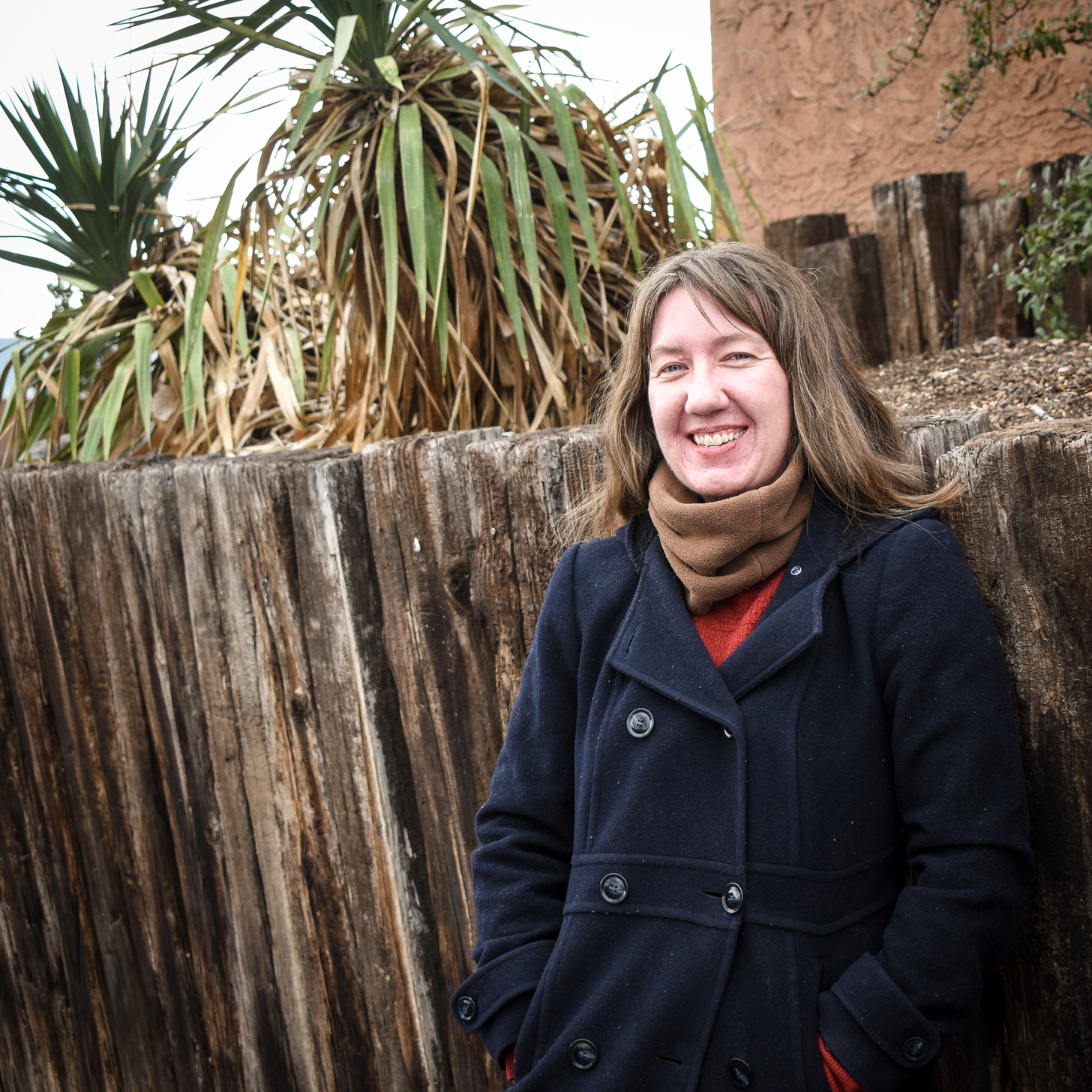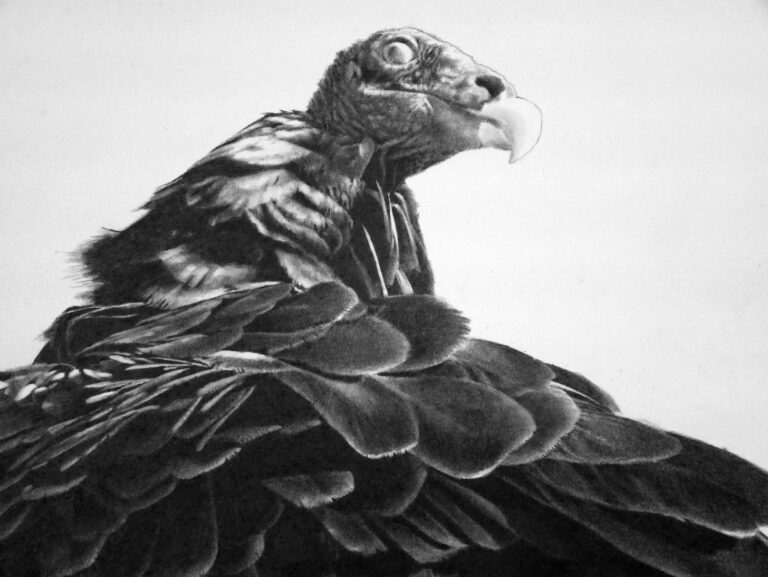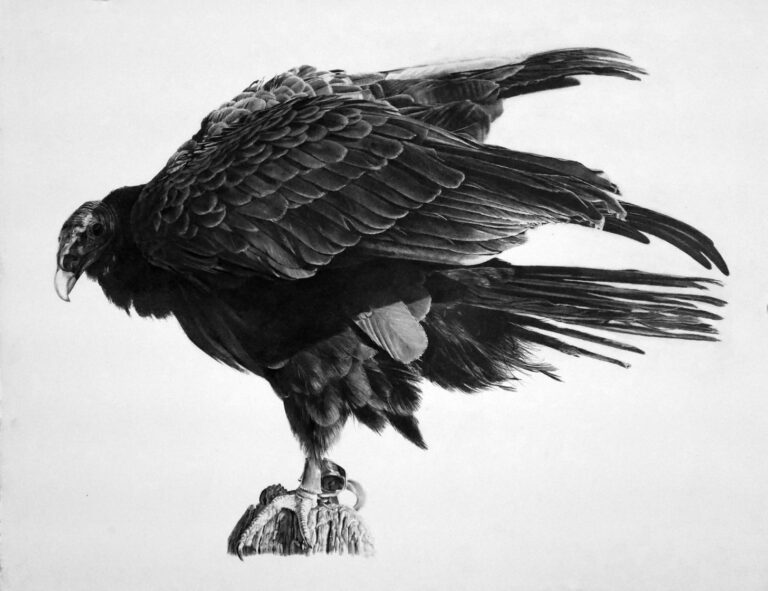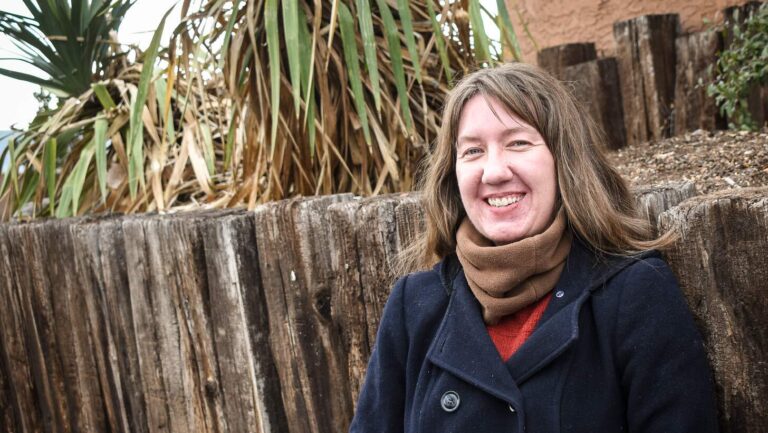Cedra Wood’s new exhibit at Sanitary Tortilla Factory consists of a series of drawings of camels and a particular turkey vulture. To most, that might not seem to warrant a solo exhibit, but that is probably because most don’t know that much about these animals. Wood does. She has put in the time with them. She hopes that when viewers see her work, they too will see what she sees in them, and it will spark their curiosity and deepen their understanding of these creatures. Weekly Alibi sat down with Wood to talk about camels, vultures and what drew her to draw them. The following is an edited version of that conversation.Weekly Alibi: Is one the soft eye and the other the mirror eye?Cedra Wood: I think it’s intentionally ambiguous. I think people will see the different eyes of the different species as mirrors for themselves in different ways. When I think of the soft, I think of the camels because they’re so large and lustrous, but anytime you look at an eye close enough, it becomes soft partly because it’s so vulnerable and fragile, even if it has a sharp look about it.What drew you to these animals?Two different circumstances. The camels I got really interested in because I had a travel grant to Australia. I was really interested in introduced species there and how they’ve spread. They estimated there were upwards of a million wild camels there at the time before they did this major culling. So, I just got interested in them and how they thrive in really unlikely circumstances. When I came back to the States in 2015, I ended up meeting a guy who was willing to share knowledge about his camels. He has 10 now and he allowed me to work on his ranch and then work as a handler on some treks in the Big Bend area. I got interested in them more as individuals during that time. I learned their quirks.What did you learn by spending time with them?I learned a lot about their history in the States. They were reintroduced briefly in the 1850s as part of an Army experiment. In terms of interacting with them, I learned a lot about how to move in such a way so as not to alarm them, but still have a presence around them. The different ways that they interact with each other as a herd. The different ways that they respond to different humans.A lot of your work involves nature. What differentiates you from a naturalist?That’s a good question and one that I ask myself, too. With the camels, I’m most interested in showing how diverse and interesting they are because I think we have this stereotyped image of a camel. Before I met these, I didn’t know how to tell them apart or even imagined how they might be different or what could distinguish them facially, physically. I wanted to show a range of how interesting and different from one another they could be. Then [with] the turkey vulture, I was interested in doing one portrait of him over and over because he’s the only one that I’ve met. I wanted to know how much I could learn about an animal through different views of it. How did the body of work of the vulture happen?I went to a life drawing session in Santa Fe where the New Mexico Wildlife Center had brought birds as an awareness raising project. When I found out about the organization, I wanted to volunteer there. I did off and on for about six months. When I first started, the ways in which you can help there as a person who’s not an expert in birds is really limited. There was a lot of food preparation and then limited access to certain birds that it was not problematic for me to interact with. This particular vulture is imprinted on people, so he’s one of the ones that’s easy to have a new person give things to. He turned out to be the animal that I interacted most with when I was there. I just found him really interesting and personable.What do you want the viewer to take away from this work?[Long pause] There’s just so many different types of viewers, but I can picture lots of different ways that people could react to it that I would find interesting and satisfying. I would like for people who have not been interested in the animals before to become specifically interested. Then, I would like for people who have specific ideas about them to be able to verify or challenge the assumptions that they have about them. With this body of work, was the process or the result more important to you? I guess for me it’s always more about the process than the final result, even though the result is what lives on. Usually, by the time I’ve finished a work, I’m able to put it out of my mind. I feel like I’ve learned what I needed to learn there. I hope that it has a life of its own after me, but as far as my relationship with it, bring it to that point and then I feel done.
A Soft Eye, A Mirror-EyeWorks by Cedra WoodOn exhibit through Feb. 28Sanitary Tortilla Factory401 Second Street SW














